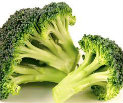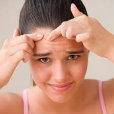Sciatica is caused by compression of nerves of the spine and manifests with pain in the leg. Up to 10% of people with back pain will also complain of sciatic pain. Generally speaking, the problem is regarded as sciatica when the leg pain is worse than the back pain. The problem can start off as being predominately most painful in the low back and later present itself as leg pain. Depending on which vertebra of the lower back are affected, the area of leg pain will vary. For example, if the problem is in mainly in the 5th lumbar vertebra, the pain can travel to the front of the foot and big toe. As well as pain, sciatica can have numbness and decreased range of movement.
One of the tests to confirm sciatica is known as the leg raise. This is done by trying to lift the leg up into the air from a lying down position.
Research from 2007 found that western medical treatment of sciatica including corticosteroid injections, muscle relaxants and NSAIDS was of little benefit. In about 30% of patients with sciatica, the pain can last up to a year or longer.
Acupuncture has been used for thousands of years to treat low back pain and sciatica. Most of the research done in the West has been done on low back pain and not specifically on sciatica. This research on low back pain has demonstrated that acupuncture is clearly a beneficial therapy. In fact in the UK, acupuncture is covered by the National Health Scheme and in New Zealand, sciatica treatment is covered by the ACC.
Many patients ask, if the problem of sciatica is caused from the vertebra compressing the nerves, how acupuncture can help that.
When the muscles go into spasm or tightness, they pull the vertebra out of place which then compresses the nerve. Research in 2009 showed that acupuncture improved muscle stiffness as well the increasing the joint mobility. It did this by reducing inflammation and increasing local micro blood circulation which thus stimulated rejuvenation and regeneration of the injured tissue.
In fact, other research has shown that acupuncture can actually promote regeneration of the sciatic nerve and even increase the blood circulation related to the sciatic nerve. This in combination with the known and proven effects of acupuncture reducing pain and swelling is why so many doctors are referring patients to members of the New Zealand register of Acupuncturists throughout the country as the first choice of treatment for sciatica.
Bron: http://www.theacupunctureclinic.co.nz
Gepost in Acupunctuur, Chinese geneeskunde, Chinese geneeswijzen, Opleiding acupunctuur ~ Geen Reactie
In Chinese tradition, stemming from Traditional Chinese Medicine (TCM), walnut is known as a food that is good for the brain. Its shape resembles that of our brain, hence it is often said that “like-shaped food nourishes like-shaped organ”.
Modern research have reinforced this ancient Chinese knowledge by the discovery that walnut contains a high proportion of omega-3 fatty acid, essential minerals and vitamins, and is abundant in antioxidants, which are all beneficial for various different brain functions. Its omega-3 content is even higher than deep-sea fishes. Research on walnut also found that several parameters related to brain aging were reversed and performance on tasks that require behavioural skills improved after consumption of walnuts.
Bron: Heritage TCM Clinic
Bij OTCG start de eerste module van de cursus “Voedingsadvies voor dagelijkse klinische praktijk” in november.
Meer info over deze cursus en andere opleidingen en nascholingen op www.otcg.be
Gepost in Opleiding Chinese geneeskunde, Traditionele chinese geneeskunde, Voeding ~ Geen Reactie
Het onderzoek in het laboratorium laat zien dat sulforafaan de vernietiging van kraakbeen in gewrichten vertraagt. De onderzoekers vonden dat muizen op een dieet rijk aan het antioxidant significant minder kraakbeenschade en artrose hadden, dan muizen met een normaal voedingspatroon.
Broccoli
Sulforafaan vind je in groenten uit de kruisbloemenfamilie zoals spruitjes en kool, maar vooral in broccoli. Het blokkeert de enzymen die gewrichtsvernietiging veroorzaken door een sleutelmolecuul dat ontstekingen veroorzaakt te stoppen.
Mogelijkheden
“De resultaten zijn veelbelovend”, aldus onderzoeker Ian Clark. “Op deze manier kunnen we niet alleen mensen met artrose behandelen, maar we kunnen mensen zonder klachten ook vertellen hoe ze hun gewrichten beschermen.” De onderzoek legt uit dat operaties bij mensen met artrose heel succesvol zijn, maar dat het niet een echte oplossing is. “Voorkomen of het proces vertragen zijn heel belangrijk en mogelijk kan dat in de toekomst met voeding.”
Het onderzoek is gepubliceerd in het tijdschrift Arthritis & Rheumatism. Op kleine schaal kijken onderzoekers van de Norwich Medical School nu of het eten van broccoli hetzelfde effect heeft op het menselijke gewricht. Hier zijn nog geen resultaten van bekend.
Bron: Science Daily
Gepost in Voeding ~ Geen Reactie
Uit recent onderzoek van het Centre for Evidence-based Chinese Medicine (Beijing, China) blijkt dat een geïntegreerd behandelplan van acupunctuur en Chinese kruiden effectiever is bij acne dan alleen Chinese kruiden. Verder blijkt dat cupping in de behandeling van acne een significant beter resultaat behaald dan medicatie.
Middels een systematische review van 43 onderzoeken waaraan 3453 patiënten deelnamen werd de effectiviteit van acupunctuurpunt stimulatie bepaald. Acupunctuur stimulatie omvat o.a. acupunctuur en cupping. In de individuele onderzoeken die opgenomen werden in de review werd het effect van stimulatie vergeleken met het effect van geen behandeling, een placebo of geneesmiddelen.
Uit de meta-analyse blijkt dat er een significant verschil is in de toename van klachtenvrije patiënten bij een geïntegreerde behandeling van acupunctuur en Chinese kruiden ten opzichte van de behandeling met alleen Chinese kruiden. Cupping was tevens significant effectiever dan medicatie en resulteerde in meer patiënten zonder klachten. Er was geen sprake van ernstige bijwerkingen in de geanalyseerde onderzoeken.
Dit onderzoek indiceert dat stimulatie van acupunctuurpunten in combinatie met andere behandelmethoden effectief acne behandeld. Verder onderzoek is nodig om deze bevindingen te bekrachtigen.
Bron:
Acupoint Stimulation for Acne: A Systematic Review of Randomized Controlled Trials
Hui-juan Cao, Guo-yan Yang, Yu-yi Wang, and Jian-ping Liu
Medical Acupuncture. June 2013
Acupunctuurgids.nl

Gepost in Acupunctuur, Traditionele chinese geneeskunde ~ Geen Reactie
Nitric oxide is known to be a signaling gas molecule that mediates dilation of blood vessels and thus is used to regulate blood flow and volume. A previous study showed how acupuncture can influence blood flow to different parts of the body. Link – Science validates traditional Chinese acupuncture
This experimental Korean study aimed to determine if there is a difference in nitric oxide levels directly at acupuncture points, compared to non-acupuncture points.
A very sensitive amperometric oxide sensor microsensor was used for this study.
The results showed a consistent statistical significant of higher nitric oxide levels around acupuncture points. This can be seen in the photo; the Heart meridian on the right hand side of the diagram shows green/ yellow/ red colours. On the left is the Lung channel, showing significant nitric oxide levels at Lung 8 and Lung 9. In the middle is the pericardium channel, showing concentrations of nitric oxide at Pericardium 6 and 7 point.
The report concluded that this tight relationship between nitric oxide levels and acupuncture points provides direct and scientific evidence on the physical existence of acupuncture points and may contribute to shedding light on their possible physiological/biological functions as understood in eastern medicine for centuries.
Ref : Measurements of Location-Dependent Nitric Oxide Levels on Skin Surface in relation to Acupuncture Point. Evid Based Complement Alternat Med. 2012;2012:781460. doi: 10.1155/2012/781460. Epub 2012 Sep 24
Gepost in Acupunctuur, Chinese geneeskunde, Opleiding acupunctuur, Traditionele chinese geneeskunde ~ Geen Reactie









